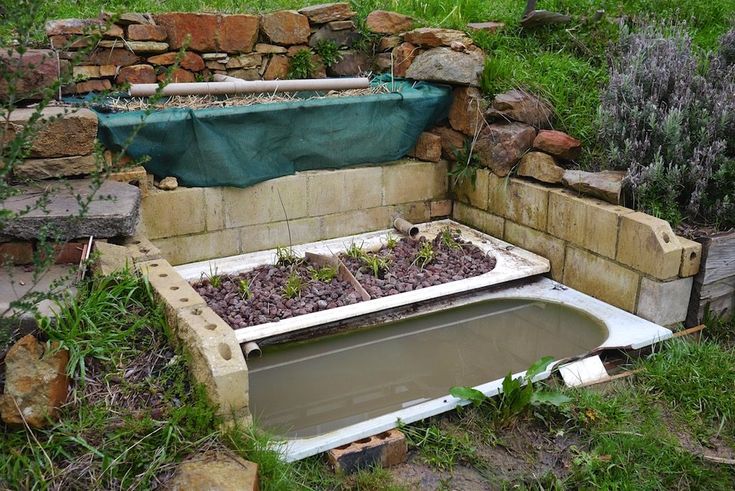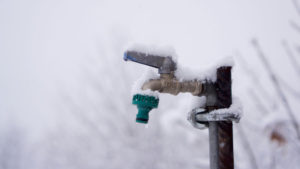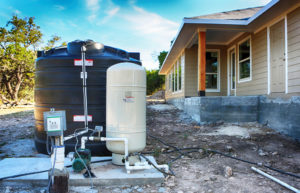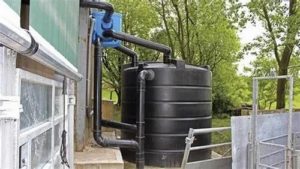Are you looking for a sustainable and innovative way to irrigate your off-grid permaculture garden?
Look no further than greywater!
This abundant resource can be harnessed from your home’s sinks, showers, and washing machine, and used to nourish your plants with minimal effort.
By incorporating greywater into your Permaculture design, you can reduce your water bill, decrease your reliance on potable water, and create a more resilient garden that is better equipped to handle droughts and other challenges.
We’ll explore the benefits of using greywater in your off-grid permaculture garden, as well as practical tips for installing and maintaining a greywater system.
Define your greywater sources
Start by identifying the sources of greywater on your property, such as sinks, showers, and washing machines.
Start by inspecting your sinks, showers, and washing machines.
These fixtures and appliances generate a significant amount of greywater, which can be collected and reused for a variety of purposes.
For instance, sink drains and shower drains can be equipped with greywater diversion devices that channel the water into a storage tank, while washing machines can be modified to release their wastewater into a designated collection system.
By identifying and mapping out these greywater sources, you can determine the best way to capture and utilize the water, depending on your specific needs and goals.
By taking stock of your greywater sources, you can prioritize which fixtures and appliances to focus on first, ensuring a successful and efficient implementation of your greywater harvesting system.
Assess your soil type and water needs
Before implementing a greywater system, assess the soil type and water needs of your garden to ensure that the greywater is being used effectively.
Assessing your soil type and water needs is a important step before installing a greywater system.
Different soil types and water requirements can significantly impact the effectiveness of your greywater system.
For example, if your soil is highly permeable and has good drainage, you may not need to add any additional irrigation system, as the greywater will be able to soak into the soil easily.
On the other hand, if your soil is dense and has poor drainage, you may need to incorporate additional irrigation methods, such as drip irrigation or sprinklers, to ensure that the greywater is being used effectively.
Understanding your water needs will help you determine the appropriate amount of greywater to use for your plants.
Some plants require more water than others, so it’s essential to know the water requirements of your specific plants to ensure that they are receiving the right amount of water.
By assessing your soil type and water needs, you can optimize the performance of your greywater system and ensure that your plants are receiving the appropriate amount of water for optimal growth.
Use a simple greywater system
A simple greywater system that uses a gravity-fed pipeline or a pump to distribute water to your garden can be an effective and low-maintenance solution.
A simple greywater system is an excellent solution for garden irrigation, especially if you have limited space or a small budget.
This type of system utilizes a gravity-fed pipeline or a pump to distribute water from your sink, shower, or washing machine to your garden.
The benefits of a simple greywater system are numerous.
It is a low-maintenance solution, requiring minimal effort to install and maintain.
It is an environmentally friendly option, as it makes use of water that would otherwise go down the drain.
It can be customized to suit your specific gardening needs, as you can choose which pipes to use and where to locate the distribution points.
There are several key components to a simple greywater system.
The first is a collection device, such as a bucket or a specialized greywater tank, which captures the water from your sink, shower, or washing machine.
This water is then channelled through a series of pipes and valves to reach your garden.
You can choose to use a gravity-fed pipeline, which relies on the natural flow of water, or a pump-based system, which can deliver water to areas that are not at the same elevation as your source water.
Once the water reaches your garden, it can be distributed through a series of irrigation tubes or soaker hoses.
These can be placed around the base of your plants, providing them with a steady supply of water.
You can also add a drip irrigation system, which delivers water directly to the roots of your plants, minimizing evaporation and runoff.
A simple greywater system is a practical and eco-friendly solution for watering your garden, and with the right components and some careful planning, you can create a system that meets your specific needs and budget.>
Grey water systems are great way to have an eco-friendly gardening solutions.
Grey water system collects water from household drains, and repurpose it to irrigate plants and save gallons of water.
This solution can work great when installed correctly, it doesn’t have to be expensive to build and maintain either.
We suggest using a bucket or a specialized grey water tank as collection device, this collects the water from your sinks, showers, and washing machines, then distributes the water to your plants using gravity fed pipeline or pumps.
Gravity-fed pipeline relies on the natural flow of the water and can be less expensive to maintain.
The pump-based system delivers water to plants at different elevations.
You can also add drip irrigation system, that delivers water directly to plant’s roots.>
Building a simple grey water system can be an effective way to save water and money on your gardening needs.
This system can be built using easily accessible components and can be tailored to fit your specific needs and budget.
With the right planning and installation, you can collect and reuse water from your household drains to irrigate your plants, making your gardening more eco-friendly and cost-effective.
Incorporate diversity in your garden
Incorporate a variety of plants in your garden to ensure that your greywater system is supporting a diverse and resilient ecosystem.
Incorporating diversity in your garden is important for creating a resilient and thriving ecosystem.
By planting a variety of plants, you will not only provide a source of nutrients and habitat for a diverse array of beneficial insects, microorganisms, and wildlife, but also create a more stable and adaptable system.
This is because different plants have different nutrient requirements, growth habits, and tolerances for pests and diseases.
By incorporating a variety of plants, you will create a more balanced and self-sustaining ecosystem that can better withstand disturbances and stressors.
For example, you might consider planting a mix of vegetables, herbs, and flowering plants to provide a diversity of nutrient sources and habitat for beneficial organisms.
Incorporating native plants and plants from different ecosystems (such as desert, forest, and grassland) will further increase the resilience and biodiversity of your garden.
By prioritizing diversity in your garden, you will not only improve the health and productivity of your greywater system, but also create a beautiful and dynamic ecosystem that supports a wide range of life.
Use mulch to conserve water
Mulch can help conserve water in your garden by reducing evaporation and runoff. Use organic materials like straw, bark, or leaves to mulch around your plants.
Using mulch to conserve water is an effective and easy-to-implement technique for improving the water efficiency of your garden.
Mulch acts as an insulating layer around your plants, reducing the amount of water that is lost through evaporation and runoff.
By applying a layer of organic materials like straw, bark, or leaves around your plants, you can create a barrier that prevents soil moisture from escaping into the atmosphere.
This not only helps to conserve water but also reduces the need for frequent watering, which can save you time and money.
Mulch can help to regulate soil temperature, keeping it cooler in the summer and warmer in the winter, which can improve the health and growth of your plants.
By incorporating mulch into your gardening routine, you can enjoy a more sustainable and water-efficient garden that thrives despite the challenges of drought and climate change.
Implement a drip irrigation system
A drip irrigation system can deliver water directly to the roots of your plants, reducing evaporation and runoff. This can be an especially effective way to use greywater in your garden.
Implementing a drip irrigation system is a wise decision for your garden, especially when using greywater.
Drip irrigation delivers water directly to the roots of your plants, reducing evaporation and runoff, which can be significant drawbacks when using greywater.
This targeted watering method ensures that your plants receive the precise amount of moisture they need, without any excess or waste.
By minimizing evaporation and runoff, you’ll save water and reduce the risk of overwatering, which can lead to root rot and other issues.
Drip irrigation systems are easy to install and maintain, making them a versatile and practical solution for any garden.
By implementing a drip irrigation system, you’ll not only conserve water but also improve the overall health and productivity of your plants.
Monitor and adjust your system
Monitor your greywater system regularly to ensure that it is functioning effectively and making adjustments as needed.
Regular monitoring and adjustment of your greywater system is important to ensure optimal performance and to prevent any potential issues.
It is recommended to check the system at least once a week, or more frequently if you have a larger or more complex system.
During these checks, look for any signs of blockages, leaks, or other problems that may be affecting the system’s efficiency.
Check the water levels in the storage tanks, the flow rate of the distribution pipes, and the condition of the filtration and disinfection components.
Adjustments can be made as needed to maintain optimal performance, such as cleaning or replacing filters, or adjusting the distribution pumps and valves.
Monitoring the system’s performance can help you identify opportunities for improvement, such as modifying the system’s design or upgrading components to better suit your needs.
By regularly monitoring and adjusting your greywater system, you can ensure that it continues to function effectively and efficiently, and that you are able to make any necessary improvements to optimize its performance.
Be mindful of safety and health considerations
When using greywater in your garden, it’s important to be mindful of safety and health considerations, such as avoiding the use of greywater near edible plants to prevent the risk of contamination.
When utilizing greywater in your garden, it’s important to prioritize safety and health considerations to ensure a thriving and risk-free growing environment.
To begin with, it’s essential to steer clear of using greywater near edible plants, as this may lead to contamination and poses a risk to human health.
Greywater can harbor harmful pathogens and chemicals, which can taint the produce and cause adverse health effects if ingested.
To avoid this risk, it’s best to reserve greywater for non-edible plants or allocate separate irrigation systems for edible plants.
Moreover, it’s important to handle greywater with care and avoid direct contact with your skin or eyes, as it may contain harmful substances that can cause infections or other health issues.
By taking these precautions, you can ensure a safe and healthy garden while maximizing the benefits of using greywater.
Want More? Dive Deeper Here!
Hey there! If you’re the type who loves going down the rabbit hole of information (like we do), you’re in the right spot. We’ve pulled together some cool reads and resources that dive a bit deeper into the stuff we chat about on our site. Whether you’re just killing time or super into the topic, these picks might just be what you’re looking for. Happy reading!
- (PDF) Off-grid Living for the Normative Society: Shifting Perception and Perspectives by Design
- (PDF) The Incomplete Guide to off-grid Waste Management | Arthur Michelet – Academia.edu
- (PDF) Buildings Integrated into Landscape & Making People Care for Them: Exploring Integrated Land-Building Ecosystems and the Lifestyles Needed to Support It
- Permaculture | EM SC 470: Applied Sustainability in Contemporary Culture
- (PDF) Facilitators Handbook For Permaculture | Hans Wahler – Academia.edu






